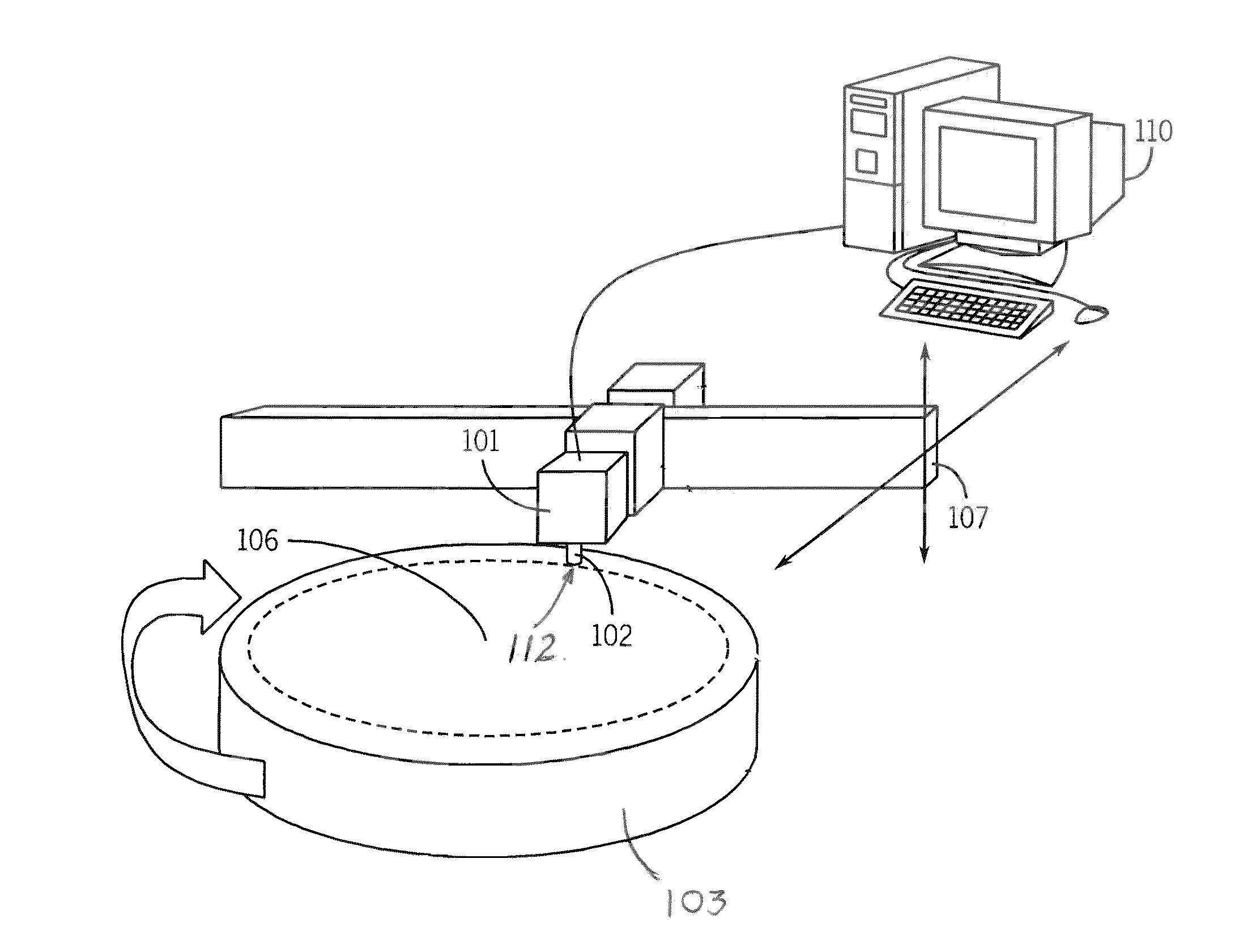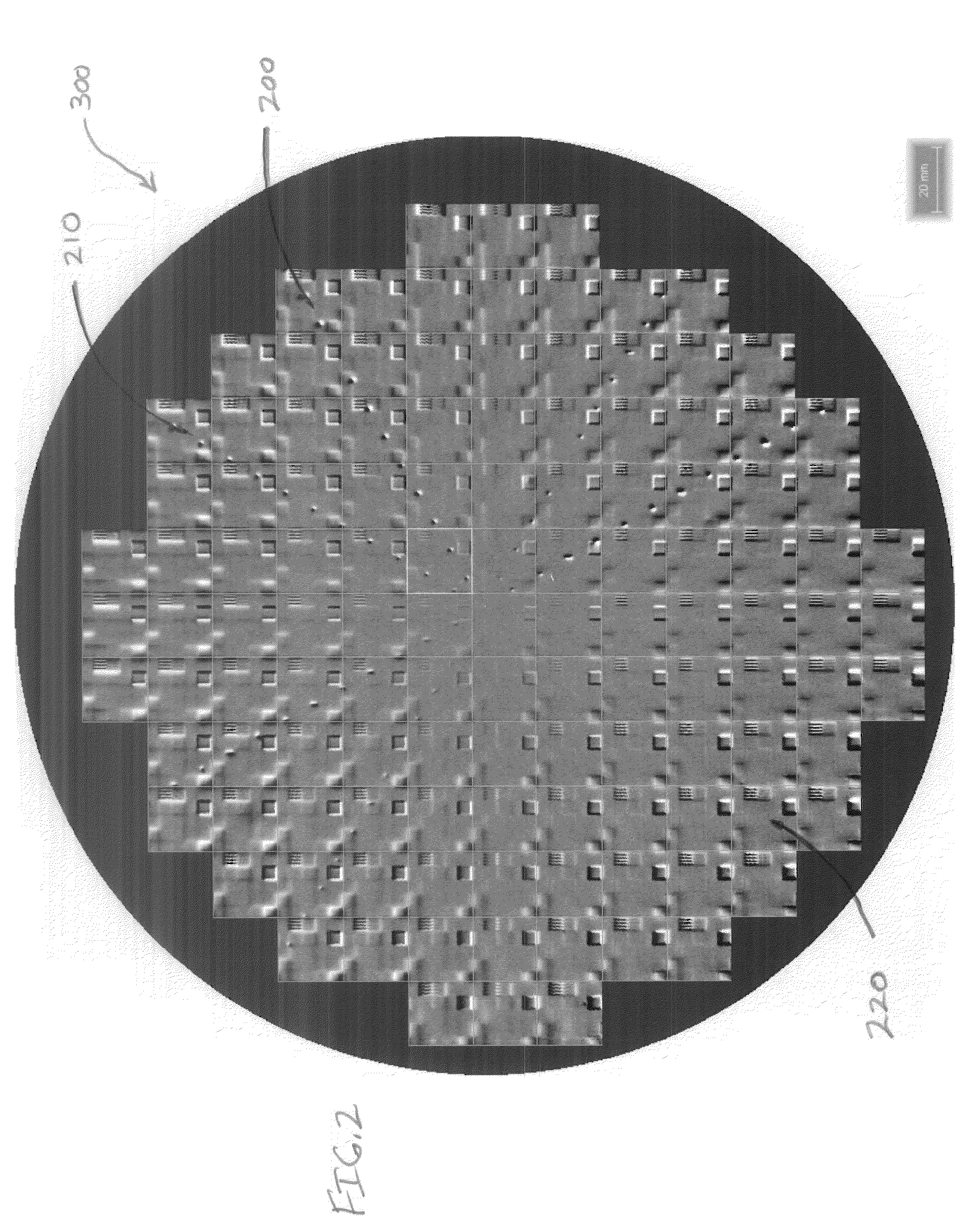Patterned wafer inspection system using a non-vibrating contact potential difference sensor
a contact potential difference and sensor technology, applied in semiconductor/solid-state device testing/measurement, image enhancement, instruments, etc., can solve the problems of inability to detect sub-monolayer chemical non-uniformities, inability to detect pre-existing charge variation across the wafer, and limited inspection technology available for patterned wafer inspection, etc., to achieve the effect of quick surface imaging and convenient data analysis
- Summary
- Abstract
- Description
- Claims
- Application Information
AI Technical Summary
Benefits of technology
Problems solved by technology
Method used
Image
Examples
example i
[0047]A standard silicon test wafer 106 with a pattern applied thereto was obtained from a commercial source which routinely produces semi-conductor grade starting wafers. This wafer consisted of a repeating test pattern die that was created using a chemical mechanical planarization process. The pattern consisted of copper and a dielectric material. Drops of chemical contaminant were then deposited along radii of the wafer using a jet printing process. This wafer 106 was inspected by the system 100 to provide the image 300 shown in FIG. 2. This image 300 resulted from radially scanning the patterned wafer 106 with a non-vibrating contact potential differential sensor 101. A graphic display showing the individual die 200 is overlaid on the image. Note that the appearance of dice changes depending on the location of the die 200 on the wafer surface. The polarity (light or dark) of the pattern edges changes depending on the direction of travel of the scanning probe tip and the signal m...
example ii
[0048]FIG. 3 shows a magnified image of a die 200 in the upper right corner of the image in FIG. 2 near the edge of the wafer 106; and the scanned image shows differential data, i.e. a signal generated at the edges of features.
example iii
[0049]FIG. 4 shows the same die 200 as FIG. 3 after an integration step and the integrated image shows regions of relative work function.
PUM
 Login to View More
Login to View More Abstract
Description
Claims
Application Information
 Login to View More
Login to View More - R&D
- Intellectual Property
- Life Sciences
- Materials
- Tech Scout
- Unparalleled Data Quality
- Higher Quality Content
- 60% Fewer Hallucinations
Browse by: Latest US Patents, China's latest patents, Technical Efficacy Thesaurus, Application Domain, Technology Topic, Popular Technical Reports.
© 2025 PatSnap. All rights reserved.Legal|Privacy policy|Modern Slavery Act Transparency Statement|Sitemap|About US| Contact US: help@patsnap.com



